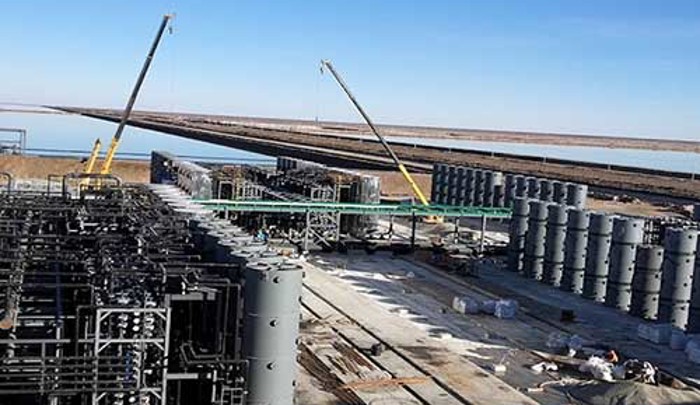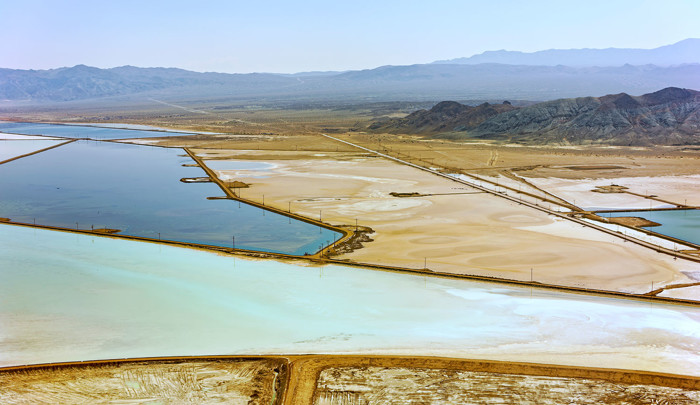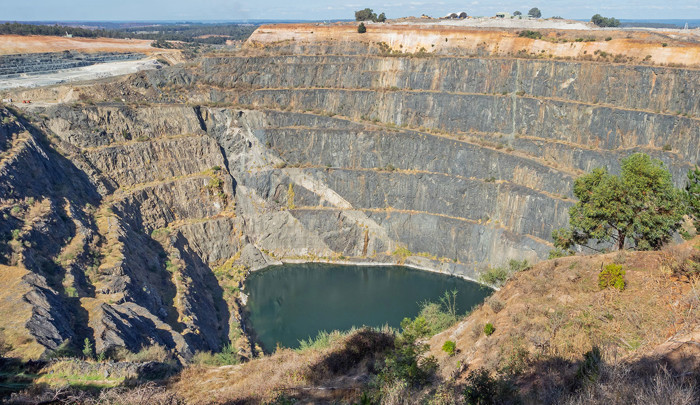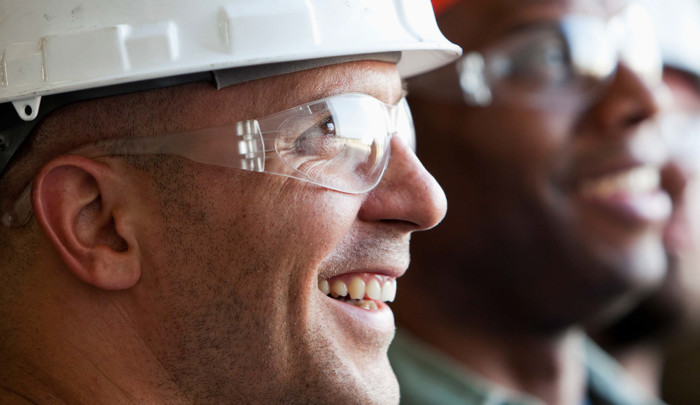What Is Direct Lithium Extraction?
Unlocking the future of lithium extraction: Discover the sustainable and efficient power of Direct Lithium Extraction (DLE).
Direct Lithium Extraction - Revolutionizing Sustainable Lithium Production
As the world shifts toward a cleaner, more energy-efficient future, the demand for lithium - a critical material in electric vehicle batteries and renewable energy storage - is surging. Meeting this growing need requires more than just mining more lithium. It demands smarter, more sustainable ways to extract it.
Enter Direct Lithium Extraction (DLE) - a breakthrough technology that offers a faster, cleaner, and more cost-effective alternative to traditional methods. In this post, we’ll break down what DLE is, why it matters, and how it’s poised to reshape the future of lithium production.
Table of contents:
Understanding Direct Lithium Extraction
The global shift toward renewable energy sources and electric mobility has underscored the vital role of lithium in building a sustainable future. However, traditional lithium extraction methods, such as evaporation ponds and mineral processing, pose significant challenges. These methods are time-consuming, water-intensive, and often lead to severe environmental damage, including habitat destruction and water pollution. On top of that, the growing demand for lithium calls for a faster, more scalable, and more efficient extraction solution.
Direct Lithium Extraction (DLE) is a groundbreaking approach that's transforming the way lithium is produced. Unlike conventional methods that depend on slow evaporation and mineral concentration, DLE involves selectively extracting lithium ions directly from lithium-rich brines. It eliminates the need for massive evaporation ponds, allowing for faster production, significantly lower water usage, and a much smaller environmental footprint.
DLE technologies use advanced adsorbents, membranes, or solvent-based systems to isolate lithium ions with high precision. By targeting lithium specifically, these methods reduce impurities and enable the production of high-purity lithium compounds suitable for direct use in battery manufacturing. The result? Lower production costs and a greener, more efficient process.
These technologies generally fall into three main categories:
- Adsorption-based DLE
This approach captures lithium ions by adsorbing them onto the surface of a selective sorbent material. Lithium is then stripped from the material using chemicals or water. Adsorption-based DLE has shown strong promise in efficiently recovering lithium from brines.
- Ion exchange-based DLE
Ion Exchange-based DLE involves trading lithium ions for cations within the structure of a sorbent material. This process requires an acid solution to strip and recover the lithium. By exchanging lithium ions with other ions present in the solution, ion exchange-based DLE technologies demonstrate the potential to extract lithium effectively from complex brines containing high concentrations of various ions.
- Solvent extraction-based DLE
Solvent extraction involves transferring lithium ions from brine into an organic liquid phase containing a specialized extractant. This extractant forms complexes with lithium, enabling the selective recovery of lithium even in complex brines while maintaining high purity.
DLE for Beginners - Understanding Direct Lithium Extraction Made Easy
Did you understand the above text? If not, here is an introduction to beginners to Direct Lithium Extraction (DLE).
Lithium is everywhere. From your smartphone to electric vehicles, this essential metal is powering the clean energy revolution. But here’s the problem: extracting lithium has traditionally been messy, expensive, and harmful to the environment. Enter Direct Lithium Extraction (DLE) - a technology that pulls lithium out of salty water like a magnet, without tearing up the earth or wasting precious water.
In this simple guide, we’ll explain DLE, how it works, and why it’s becoming the hottest topic in the battery world. Ready to discover how turning salty water into clean energy gold is easier than you think? Let’s dive in!
-
What is Direct Lithium Extraction (DLE)?
Imagine you have a big glass of salty water, and somewhere in that water is a valuable ingredient called lithium - an essential metal used to make batteries. The problem? It’s mixed in with everything else, like salt and other minerals. So, how do you get it out?
Direct Lithium Extraction (DLE) is a newer, much more innovative way to find and pull out that lithium from salty water - or “brine” - without wasting large amounts of water or causing significant environmental damage like traditional mining methods.
-
What are ions, and why do they matter in DLE?
Alright, so imagine that glass of salty water again. Inside, the lithium isn’t just floating around as little pieces of metal - it’s dissolved in the water as ions.
What is an ion?
Think of an ion as a tiny Lego piece that’s missing a part or has an extra one, giving it an electric charge. In this case, lithium is a positively charged ion (Li⁺) - like a little Lego block that’s lost a piece and is looking for something to stick to.
DLE uses special materials designed to attract these lithium ions (Li⁺) while ignoring everything else, making the extraction super precise and efficient.
-
How does DLE work?
Here’s a simple breakdown of how DLE turns salty water into valuable lithium:
- Brine collection: Brine is collected from sources such as oilfield wastewater, geothermal plants, or natural underground reservoirs.
- Extraction: The brine is pumped through a special material that acts like a super-smart magnet for lithium ions (Li⁺). The lithium sticks to it while everything else flows past.
- Purification: The lithium is removed, cleaned, and transformed into battery-grade lithium carbonate or hydroxide, ready to power electric vehicles and other battery-powered technologies.
- Reinjection or disposal: The leftover brine, now without lithium, is safely returned underground or disposed of in an environmentally responsible way.
Advantages of Direct Lithium Extraction
Direct Lithium Extraction offers several significant advantages over conventional extraction methods:
Direct Lithium Extraction (DLE) is a groundbreaking technology that’s changing how lithium is extracted.
It offers significant advantages over traditional methods – from high efficiency and reduced water consumption to faster production and a dramatically smaller environmental footprint. DLE has the potential to reshape the lithium industry and play a crucial role in building a more sustainable and scalable supply chain for the clean energy transition.
-
Faster time to market
DLE drastically cuts extraction time, making lithium recovery faster and more streamlined than conventional methods. Instead of relying on evaporation ponds that can take months or even years, DLE technologies recover lithium in just hours or days. This speed is essential for meeting the growing demand for high-purity lithium products, especially as the electric vehicle market and renewable energy storage continue to scale rapidly.
-
Minimized water consumption
Traditional lithium extraction methods consume enormous amounts of water, a significant concern in regions already facing water scarcity. Direct Lithium Extraction (DLE) offers a better alternative. By eliminating the need for evaporation ponds and extracting lithium directly from brine, DLE dramatically reduces water usage. This not only helps conserve freshwater resources but also eases the strain on local ecosystems and communities.
-
Reduced environmental impact
One of the most significant advantages of Direct Lithium Extraction (DLE) is its ability to reduce environmental harm. Traditional methods often lead to soil degradation, water pollution, and habitat destruction. In contrast, DLE avoids large-scale evaporation and uses selective, targeted processes to extract lithium, leaving behind a much smaller ecological footprint.
-
Lower carbon emissions
DLE technologies contribute to a lower carbon footprint by reducing the energy consumption and greenhouse gas emissions typically associated with lithium extraction. By employing more efficient and targeted extraction methods, DLE plays a vital role in decarbonizing the energy sector, supporting the transition to cleaner, more sustainable energy solutions.
-
Cost-effectiveness
With its streamlined and efficient extraction process, DLE offers clear cost advantages over conventional methods. Faster extraction timelines, reduced water usage, and less reliance on extensive purification steps all contribute to lower operational costs. As the technology continues to mature and scale, DLE is poised to become an increasingly cost-effective solution for sustainable lithium production.
Technological Benchmark
Comparing different Direct Lithium Extraction approaches with traditional lithium mining.
Our patented solution leverages Direct Lithium Extraction (DLE) technology, combining advanced adsorption techniques with state-of-the-art water treatment. By using wastewater from oil and gas production or geothermal brine as our primary feedstock, we accelerate lithium production timelines and dramatically cut costs. The result? One of the most efficient and cost-effective lithium extraction solutions on the market today.

Lithium Harvest Solution |

Traditional DLE |

Solar Evaporation Brine Extraction |

Hard Rock Mining |
|
|---|---|---|---|---|
| Lithium feedstock | Produced water/geothermal brine | Continental brine | Continental brine | Rock / spodumene |
| Project implementation time | 12-18 months | 5-7 years | 13-15 years | 10-17 years |
| Lithium carbonate production time | 2 hours | 2 hours | 13-24 months | 3-6 months |
| Lithium yield | >95% | 80-95% | 20-50% | 40-70% |
| Average footprint per mt of LCE | 61 ft² | 172 ft² | 39,352 ft² | 3,605 ft² |
| Environmental impact | Minimal | Minimal | Soil and water contamination | Soil and water contamination |
| Freshwater consumption per mt of LCE | 22,729 gallons | 26,417 gallons | 118,877 gallons | 20,341 gallons |
| CO₂ footprint per mt of LCE | Neutral | 2.5 tonne | 3.1 tonne | 20.4 tonne |
| Average invested capital per mt of LCE | $17,100 | $62,500 | $34,000 | $60,000 |
| Average cost per mt of LCE | $3,647 | $6,000 | $6,400 | $7,000 |

Lithium Harvest Solution

Traditional DLE

Solar Evaporation Brine Extraction

Hard Rock Mining
The Future of Direct Lithium Extraction
Direct Lithium Extraction (DLE) has wide-ranging applications across various lithium sources, including continental brines, geothermal fluids, and oilfield wastewater. By harnessing this technology, companies can unlock lithium from previously untapped resources, diversify their global supply chains, and reduce their reliance on geographically concentrated deposits.
The future looks bright for DLE. Ongoing R&D efforts are focused on enhancing efficiency, scalability, and cost-effectiveness. Collaboration between industry leaders, researchers, and technology developers will be key to unlocking DLE’s full potential and building a more sustainable lithium industry.
DLE offers a smarter, cleaner path forward. With greater efficiency, lower water use, and reduced environmental impact, it is a transformative solution for meeting the growing demand for electric vehicles (EVs) and renewable energy storage sustainably and responsibly. As DLE adoption accelerates, it will play a central role in powering the shift to a low-carbon future.
Our Innovative DLE Technology
Turning waste into value: Lithium Harvest’s innovative DLE technology extracts lithium from wastewater.
Direct Lithium Extraction (DLE) technologies have paved the way for significant advancements in lithium extraction, offering more sustainable and efficient solutions. Lithium Harvest is at the forefront of this revolution, specializing in a patented DLE technology combined with advanced water treatment that extracts lithium from oilfield wastewater and geothermal lithium extraction.
Lithium Harvest's groundbreaking approach transforms oil and gas wastewater, produced water, or geothermal brine into a valuable resource. By combining our expertise in water treatment and extraction, we have created a solution that makes high-quality lithium compounds and minimizes the environmental impact associated with oilfield wastewater disposal.
Lithium Harvest is at the forefront of the Direct Lithium Extraction revolution. We utilize our patented and innovative DLE solution to extract lithium from oilfield wastewater and geothermal brine. As water treatment experts, we possess the knowledge and expertise to effectively manage the extraction of critical minerals from wastewater while maintaining a strong focus on sustainability. With our pioneering approach, we are reshaping the lithium industry, promoting a circular economy, and building a better future for generations to come.

Lithium Extraction
You may also be interested in:


